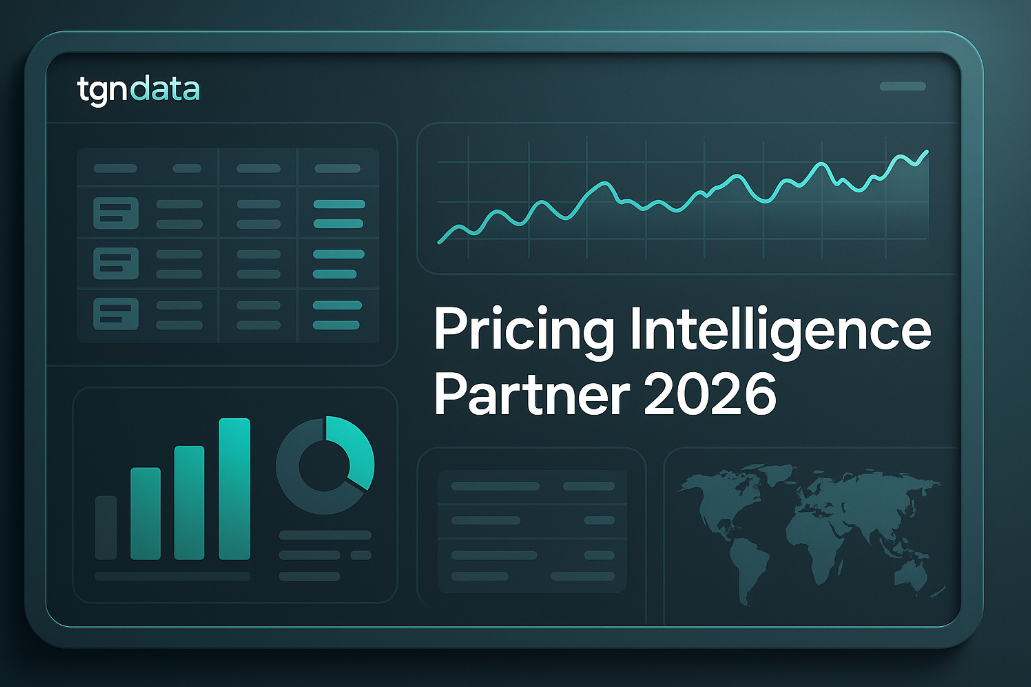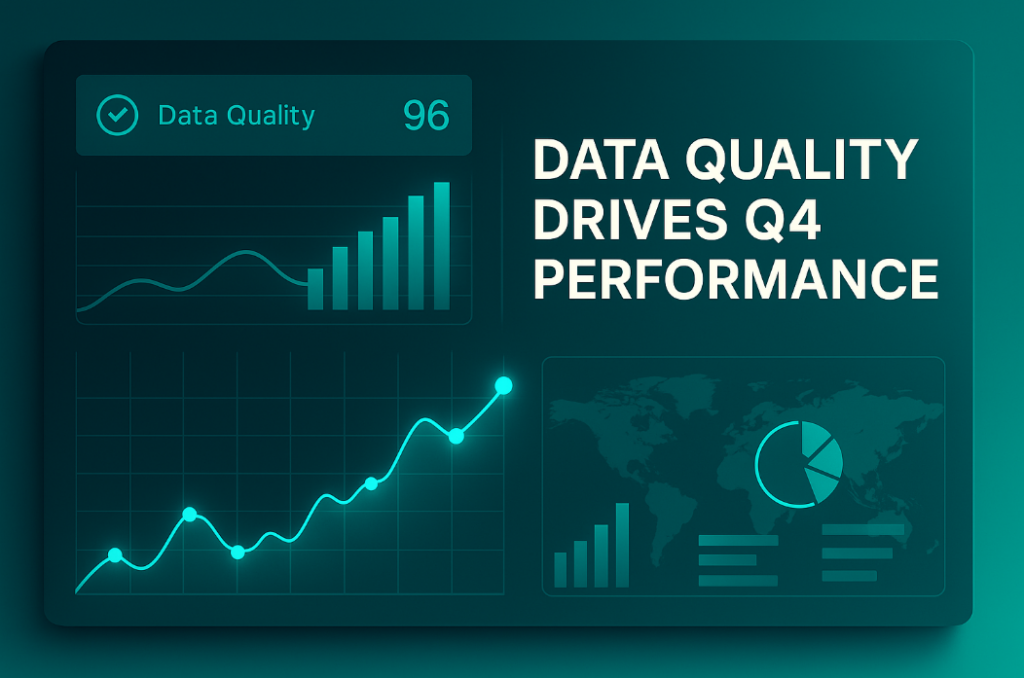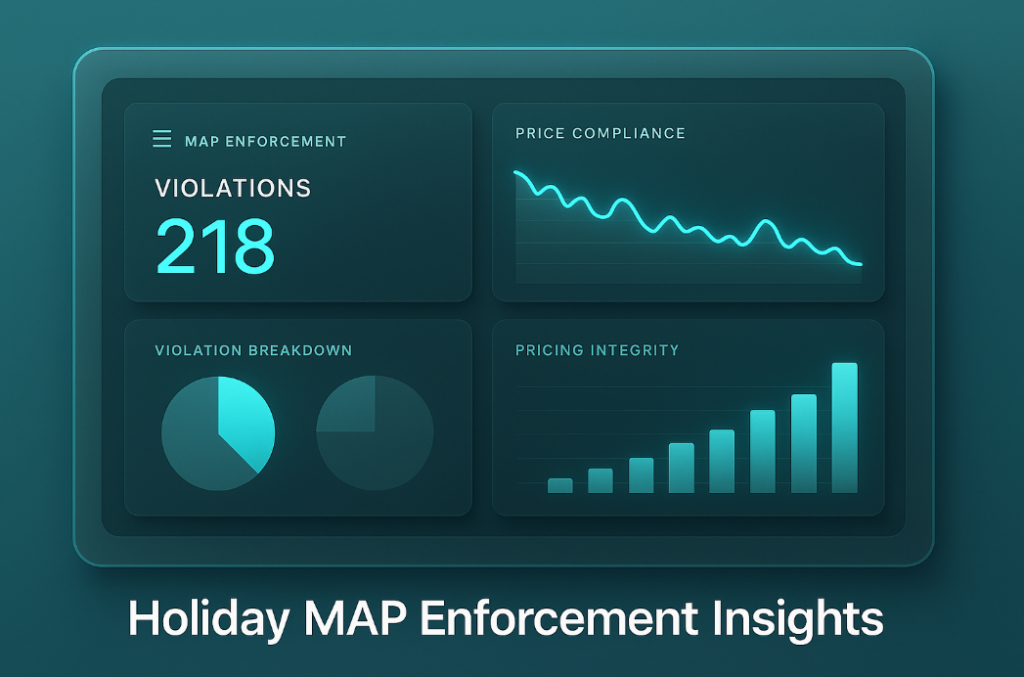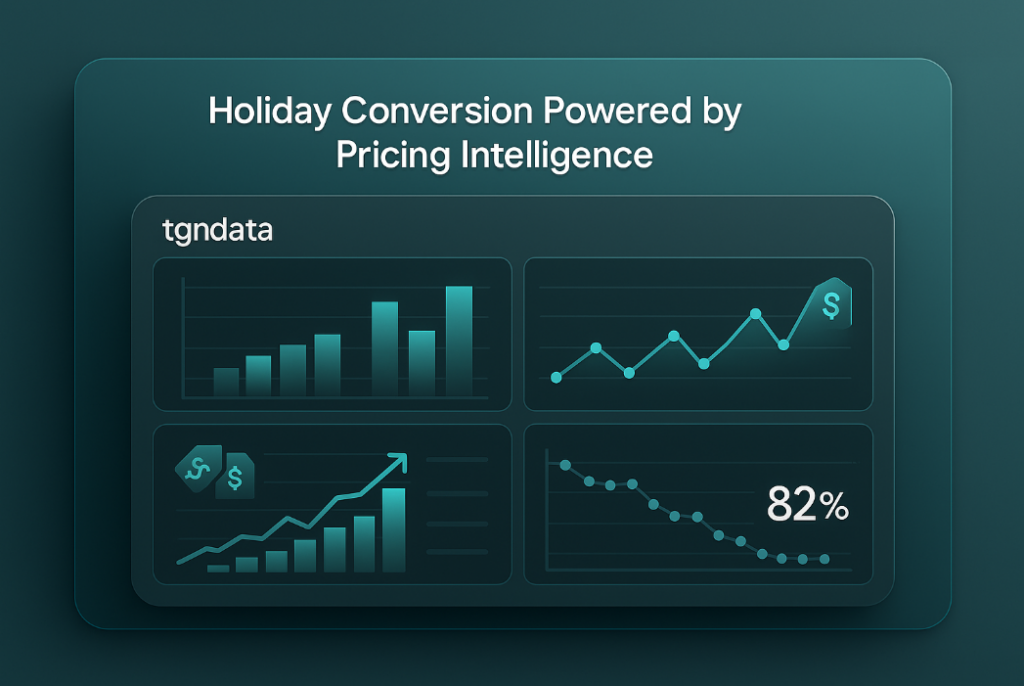- Product
- Solution for
For Your Industry
- Plans & Pricing
- Company
- Resources
For Your Industry
Selecting the right pricing intelligence partner has become one of the most important strategic decisions for retailers and eCommerce organizations. The competitive landscape in 2026 is faster, more transparent and more algorithm driven than ever. Retailers compete across marketplaces, direct to consumer channels, traditional retail and emerging AI powered shopping environments. They need accurate, timely and actionable competitive data to make informed decisions. A pricing intelligence partner provides the technology, data infrastructure and analytical capabilities that enable teams to react quickly, identify margin opportunities and maintain control of their market position.
This 2026 guide explains how to choose the right pricing intelligence partner for your business. It covers the critical features to evaluate, the data quality standards to expect, the integration capabilities required for modern pricing workflows and the questions every pricing leader should ask when comparing vendors. It is designed for pricing managers, category leaders, analysts, eCommerce teams and executives who want to elevate their pricing strategy through advanced competitive intelligence. The keyphrase pricing intelligence partner appears throughout this article to support search relevance.

Retail competition moves at unprecedented speed. Prices on marketplaces change hourly. Many brands use dynamic pricing systems. Retailers expand assortments while customers compare products across channels instantly. Pricing intelligence has become a strategic necessity, not a tactical tool.
Modern consumers expect:
Fair and consistent pricing
Clear differentiation between promotional and everyday price
Accurate product availability
Fast access to alternative products
Transparency across channels
Without strong pricing intelligence, retailers struggle to deliver this experience.
Retailers face frequent market shocks such as:
Rapid marketplace price drops
Flash promotions
High seller churn
Seasonal volatility
Supply chain disruptions
Inventory shortages
Accurate and frequent competitor monitoring helps teams stay ahead of disruptions.
In 2026, pricing decisions happen continuously. Teams cannot rely on weekly reports or manual spreadsheets. They need:
High accuracy competitive data
Hourly or daily updates
Automated alerts
Historical trend analysis
Promotion impact tracking
A pricing intelligence partner becomes the foundation of these capabilities.
A pricing intelligence partner provides the technology, data pipelines and analytics needed to monitor competitors, analyze price movements and support strategic decision making. Choosing the right partner affects everything from margin performance to digital shelf visibility.
A strong partner delivers capabilities that include:
Automated competitor data collection
Large scale product matching
Data normalization and cleaning
Real time or scheduled data feeds
Pricing and promotion tracking
Content and attribute comparison
Ratings and reviews analysis
Marketplace seller monitoring
Direct integration with pricing systems
The partner becomes a core piece of a company’s pricing infrastructure.
A pricing intelligence partner enables teams to:
Identify opportunities to raise or reduce prices
Protect margin through competitive monitoring
Respond quickly to competitor movements
Optimize promotions
Improve assortment planning
Enhance retail analytics models
Support AI driven pricing systems
The right partner strengthens every part of the pricing lifecycle.
When evaluating a pricing intelligence partner, retailers should look for nine essential capabilities that define performance and long term value.
Coverage should include:
Direct to consumer sites
Marketplaces
Specialized category retailers
Regional competitors
Emerging digital channels
Accuracy must remain consistent across global markets.
In 2026, competitive advantage depends on update speed. Look for partners offering:
Hourly updates for fast moving categories
Daily updates for standard retail
Real time signals for marketplaces and promotions
Update frequency should match category dynamics.
A true pricing intelligence partner must track:
Base price and final price
Promotion depth and timing
Stock availability
Content and attributes
Ratings and reviews
Marketplace seller behavior
Shipping costs and delivery times
This creates holistic visibility.
Historical price and promotion trends give teams the context they need to forecast demand, measure price elasticity and understand long term competitor behavior. By tracking how prices and promotions change over time, analysts can identify recurring patterns such as seasonal discount cycles, typical markdown depth, and the timing of major promotional events.
This helps teams predict competitor actions, plan more effective promotions and design pricing rules that align with real market dynamics. A strong pricing intelligence partner provides complete and reliable historical data, turning past activity into a strategic advantage.
Vendors should detect:
Price drops
Promotion launches
Stockouts
Content changes
Marketplace shifts
Alerts reduce reaction time and prevent missed opportunities.
The partner must support:
API delivery
Flat file exports
Direct database connections
BI tool integrations
Pricing engine integrations
Flexibility ensures compatibility with internal systems.
As assortments expand, the platform must scale without delays or data degradation. A strong pricing intelligence partner provides an infrastructure that can handle larger SKU counts, more competitors, additional markets and higher update frequency without performance issues.
This requires distributed systems that support parallel processing, reliable data pipelines and storage built for rapid growth. Scalable infrastructure ensures that data freshness, accuracy and delivery speed remain consistent even during peak retail periods or sudden increases in competitor activity. It also allows teams to onboard new categories and channels quickly, without reworking existing workflows or sacrificing data quality.
Strong vendors provide clear reporting on:
Data coverage
Freshness
Matching accuracy
Error resolution processes
Transparency builds trust.
A pricing intelligence partner should act as an extension of your team by offering:
Onboarding assistance
Data issue resolution
Consultative guidance
Best practice recommendations
Regular performance reviews
Support quality is often a deciding factor.
Data quality is the foundation of all pricing intelligence. Poor quality competitive data results in incorrect decisions, misaligned prices and lost margin. Retailers must understand the standards a pricing intelligence partner must meet.
High quality data should meet the following criteria:
Correct raw price extraction
Correct final price calculation
Accurate promotion detection
Accurate availability detection
Accurate attribute extraction
Up-to-date seller data
Any error reduces the reliability of downstream actions.
Coverage must be:
Multi channel
Multi geography
Multi category
Deep across SKUs
A narrow dataset creates blind spots and weakens insights.
Freshness is measured by:
Update schedules
Time between scans
Consistency across locations
Freshness ensures responsiveness in fast markets.
Processes should produce consistent results across time and categories.
Partners must maintain automated and manual validation steps that include:
Outlier checks
Trend anomaly detection
Attribute consistency checks
Automated failure recovery
Source reliability scoring
Data quality requires constant monitoring.
Product matching is one of the most critical skills a pricing intelligence partner must master. Accurate matching ensures apples to apples comparisons across competitors.
Complexities include:
Variant structure differences
Missing attributes
Different naming conventions
Marketplace seller inconsistencies
Bundled vs standalone products
Conflicting attribute formatting
Poor matching creates incorrect insights.
Look for partners who apply:
Attribute level comparison
Machine learning matching
Image similarity detection
Title normalization
Rule based matching
Human supervised review
These techniques improve match accuracy significantly.
Normalization ensures that all data follows consistent formats. Examples include:
Standardized attribute names
Currency conversion
Unified category taxonomy
Cleaned titles
Standard units of measure
Normalized data supports accurate analytics.
Partners should provide match accuracy KPIs and tools to manually validate or refine matches.
Knowing how a partner collects competitive data helps evaluate reliability and scale.
Web crawling retrieves data directly from competitor sites. Important considerations:
Crawler speed
Adaptability to site changes
Latency
IP management
Error recovery
APIs provide structured access to marketplace data. Strengths include:
High accuracy
Clean data
Seller level detail
Most advanced partners combine web crawling, APIs and structured feeds to achieve broad coverage.
Verify that the partner follows legal, compliant and ethical data collection guidelines.
A pricing intelligence partner must integrate smoothly into existing workflows.
Look for integrations with:
Dynamic pricing engines
ERP systems
PIM tools
BI platforms
Data warehouses
Custom internal tools
APIs should offer:
High throughput
Filterable endpoints
Historical access
Error logging
Secure authentication
The partner should support tools such as:
Tableau
Power BI
Looker
Databricks
Snowflake
Teams should be able to automate:
Daily competitive reports
Price index dashboards
Promotion monitoring
Stockout alerts
Integration flexibility ensures operational efficiency.
ricing intelligence systems must support large scale monitoring and rapid expansion.
Partners must maintain:
Distributed computing systems
High capacity storage
Fault tolerant architectures
Real time processing pipelines
The partner should scale across:
New markets
Expanded assortments
Added competitors
Seasonal traffic spikes
Automation reduces manual workload by supporting:
Auto alerts
Data quality checks
Scheduled extraction
Automatic matching
Continuous monitoring
Automation determines long term efficiency.
Vendor transparency is often overlooked but extremely important.
The partner should explain:
How data is collected
How matching works
How quality is measured
How errors are corrected
Opaque vendors pose long term risk.
Evaluate:
Support response times
Dedicated account managers
Regular performance reviews
Access to technical teams
Availability during peak retail events
Good support separates top vendors from average ones.
Security is essential for any pricing intelligence partner.
Partners must provide:
Encryption at rest
Encryption in transit
Secure authentication
Role based access controls
Look for compliance with:
GDPR
CCPA
SOC 2
Industry specific requirements
Vendor systems should support:
Audit trails
Access logs
Data retention controls
Security must be taken seriously.
Different sectors have unique data demands.
Requires high-frequency updates due to constant price changes.
Large assortments and daily promotions require continuous monitoring.
Product variants and seasonal promotions increase matching complexity.
Complex bundles and category structures require robust normalization.
A strong RFP helps teams compare partners effectively.
Data quality requirements
Matching accuracy expectations
Update frequency
Coverage requirements
Integration needs
Support expectations
Security requirements
Performance reporting
Match accuracy rate
Price extraction accuracy
Coverage percentage
Data freshness
Uptime and reliability
A simple checklist helps teams evaluate each pricing intelligence partner.
Coverage across competitors and markets
High frequency updates
Strong product matching
Clean and normalized data
Detailed data types
Historical data
Integrations and APIs
Data quality reporting
Transparent methodology
Strong support and onboarding
Scalable infrastructure
Strong security controls
Proven industry expertise
In 2026, choosing the right pricing intelligence partner is a strategic decision that shapes your pricing performance, competitive position and operational efficiency. A strong partner provides accurate and complete competitive data, high-frequency updates, deep product matching capabilities and seamless integration with pricing and analytics systems. The partner must combine advanced technology with transparent methodology and reliable support.
If you are ready to strengthen your competitive intelligence operations, tgndata delivers accurate data feeds, scalable infrastructure, powerful analytics, and pricing automation solutions. Contact tgndata to modernize your pricing strategy and move ahead of your competition.













Missing an important marketplace?
Send us your request to add it!